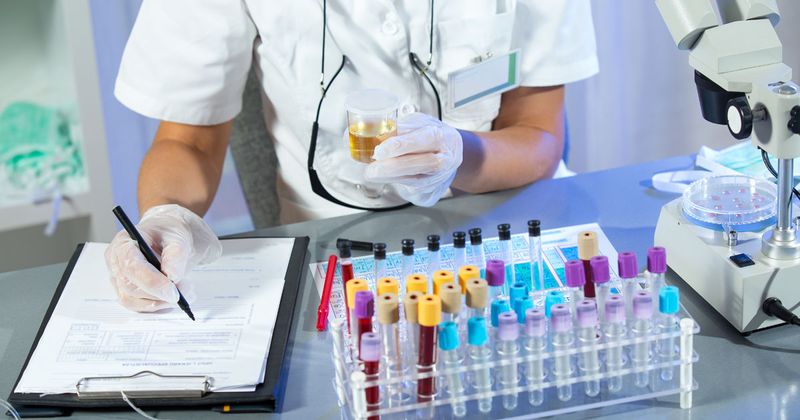Study: Urine albumin-creatinine ratio linked to hyperkalemia in patients with CKD
Key takeaways:
- Patients with a urine albumin-creatinine ratio of at least 3,500 mg/g had high rates of hyperkalemia.
- High rates also occurred in patients prescribed steroidal mineralocorticoid receptor antagonists.
Hyperkalemia may be considered a common occurrence in patients with chronic kidney disease, particularly in those with heart failure or diabetes, published data show.
“[T]he increased risk of hyperkalemia in patients using renin-angiotensin-aldosterone system inhibitors — the cornerstone of pharmacotherapy in slowing disease progression in patients with CKD — is well-established,” Sascha van Boemmel-Wegmann, PhD, of Bayer AG, IEG Data Science, Research and Analytics, wrote with colleagues. “Concerns about the actual or potential occurrence of hyperkalemia commonly leads to down-titration or discontinuation of these guideline-directed medications, which in turn is associated with worse clinical outcomes, making long-term patient management challenging.”

In the retrospective cohort study, researchers aimed to estimate the incidence of hyperkalemia in patients with non-dialysis CKD, while accounting for the level of kidney damage and kidney function. Overall, 1,771,900 patients with CKD stages 1 through 4 taken from the U.S. Optum de-identified electronic health records database made up the study cohort.
Investigators assessed kidney damage and function at baseline based on urine albumin-creatinine ratio (UACR) and eGFR, respectively, before selecting patient subgroups.
The primary outcome was hyperkalemia, defined as two elevated serum potassium values of at least 5.5 mmol/L from the inpatient setting 2 to 24 hours apart; outpatient setting with a maximum of 7 days apart; or one elevated serum potassium value plus pharmacotherapy initiation or hyperkalemia diagnosis, with a maximum of 3 days apart.
According to the findings, the incidence of hyperkalemia was 3.37 events per 100 person-years during 3.9 years of follow-up. Researchers observed higher incidence rates in patients with increased UACR and lower eGFR. Patients with a UACR of at least 3,500 mg/g had the highest rates of hyperkalemia, with up to 19.09 events per 100 person-years, van Boemmel-Wegmann and colleagues noted.
High rates also occurred in patients with type 2 diabetes, heart failure or those prescribed steroidal mineralocorticoid receptor antagonists, the researchers found.
“Our findings suggest that UACR levels are an important factor in hyperkalemia risk stratification, in addition to eGFR levels, and other known risk factors,” they wrote. The researchers wrote that “the importance of routinely monitoring both UACR and serum potassium levels in patients with CKD in clinical practice to help mitigate the development of hyperkalemia; particular attention should focus on patients with [type 2 diabetes] T2D, heart failure or prescribed [steroidal mineralocorticoid receptor antagonists] sMRAs. Further studies are needed to study the associations between hyperkalemia and clinical outcomes in this patient population.”
